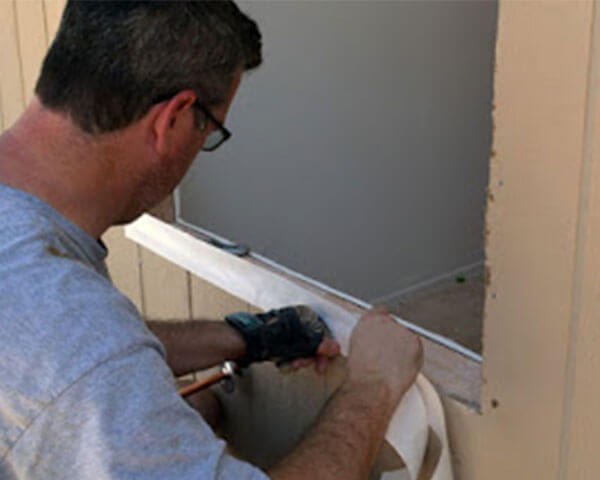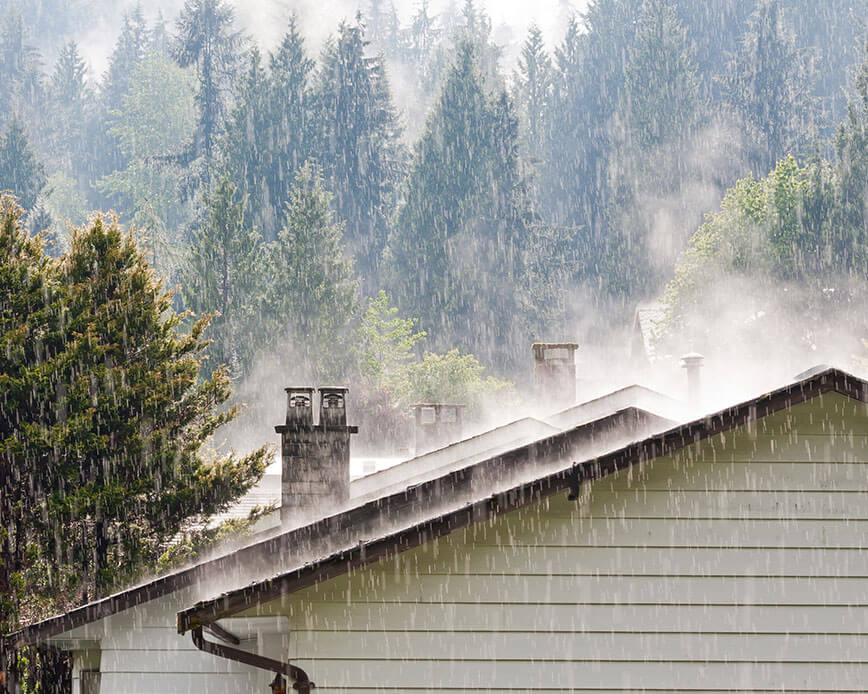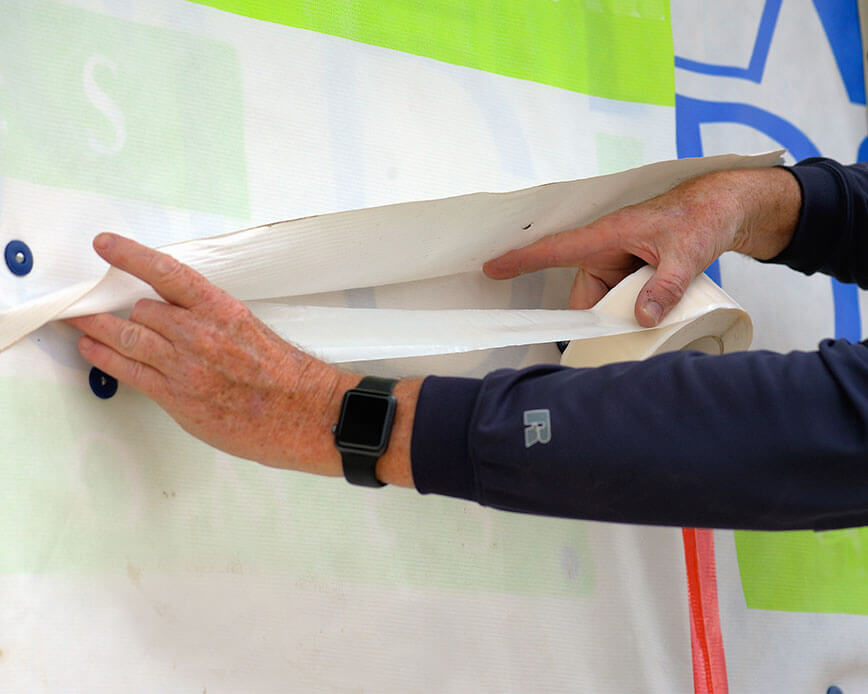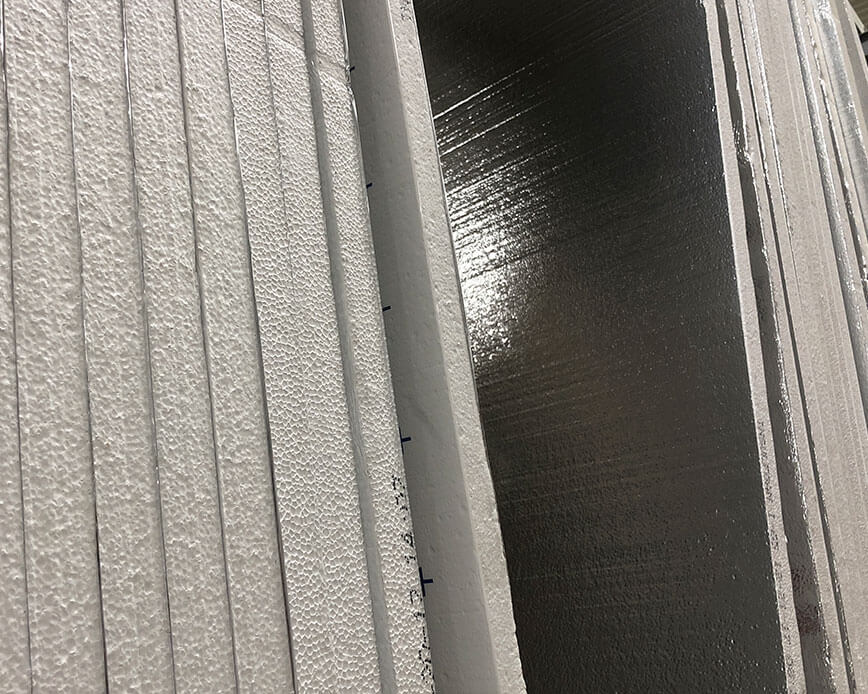Builders have long battled the intrusion of unwanted moisture and air into their structures. Water is a major factor in building damage, causing mold, decay, and corrosion responsible for structural durability and health issues.
When it comes to preventing moisture, flashing tape is on the front lines of defense.
This isn’t new information for contractors, builders or tape manufacturers. Thanks in part to new code regulations, construction flashing and seaming tapes are transitioning from “optional” building materials to required products that building professionals rely on to improve the tightness of the building envelope.
Here’s everything you need to know about flashing tape.
What is Flashing Tape?
By definition, flashing tapes are thin continuous impervious materials that prevent water and air infiltration within the building envelope. By taping seams and flashing rough openings, builders ensure a tight seal to prevent water from entering a building and create air barriers that lower AC costs and improve interior air quality.
In recent years new “flexible flashing” tapes have been introduced to the marketplace. These new materials have significant advantages over traditional flashing materials. Unlike most metal flashings, for example, flexible flashings conform easily to unusual shapes, i.e., folding to form a waterproof end-dam on a rough windowsill during window installation.
In theory, a properly installed flashing system solves a multitude of moisture and airflow problems around windows, doors, and nail holes, a property that has made them especially useful on roofs.
But do they stick to everything?
It depends.
How to Choose The Right Flashing Tape
When it comes to choosing the right flashing tape, here’s what you need to consider:
UV Protection
It is essential to know how much UV protection a roll of tape has, especially if the tape is going to be exposed for long periods. Sunlight degrades certain tapes and will become less effective over time if it does not have UV protection built-into the tape. Many factors contribute to the amount of UV protection in a roll of tape, and if this is a critical factor for you, you need to find out just how much protection.
Modified Bitumen vs. Butyl vs. Acrylic
Many contractors will choose a more cost-effective bitumen flashing, which is made from petroleum and asphalt. However, it will dry out over time, reducing the effectiveness of flashing.
The next step up would be butyl adhesive technology, but not all butyls are created equal. While most butyl rubber products bond better to difficult substrates than modified bitumen and can be peeled off and adjusted during installation, it is crucial to look carefully at the temperature range. Some butyl adhesives are modified and stay more flexible in cold weather and more stable at high temperatures.
The best flashing adhesive is ones with acrylic adhesive technology. It’s the longest lasting and has the most extensive temperature range, but it is also the most expensive.
Cold Weather
Temperature plays a key role in choosing the right flashing tape. In general, modified-bitumen products do not work well in cold weather. Most become less sticky at around 50°F and will not stick well below about 40°F. A butyl-based (better) or acrylic-based (best) product is the better choice for cold weather.
Installation
Last, but not least, proper installation is paramount.
To obtain good results and maintain warranty coverage, it is critical to follow the manufacturer’s installation instructions. These vary from product to product, but generally, they address the same issues: installation techniques, application temperatures and compatibility with substrates as well as surrounding materials that come into contact with the membrane.
Compatibility of materials is critical, especially on hard to bond materials, which is why choosing the right tape for the application is as important as proper installation.
Choosing and Installing Flashing Tape with Windows and Doors

Besides choosing the right kind of flashing tape, another critical consideration is installation. These days, every manufacturer seems to have a specific set of installation guidelines that must be followed to uphold each respective product’s warranty.
Sounds easy enough, but there’s not one single “correct” way. Guidelines vary between manufacturers, making a contractor’s job that much more difficult. When in doubt, though, follow the manufacturer’s instructions. The International Residential Code (R613.1) requires windows to be “installed and flashed according to manufacturers’ instructions.” If there’s ever a problem, you’ve done what was required by the building code.
The folks at Fine Homebuilding give a fantastic tutorial here: Installing and Flashing Windows Correctly
When it comes to using flashing tape with these installations, temperatures and compatibility of materials is critical, especially on hard to bond materials. We’re going to cover the basics below, but you can also find great information and case studies here and here.
Temperature
Again, weather and temperature play critical roles in installation. Modified-bitumen products do not fare well in cold weather. Most become less sticky at around 50°F and will not stick well below about 40°F. Unless you are working with a tape formulated explicitly for low-temperature usage, a butyl or acrylic-based product is a better choice in cold weather.
High temperatures can also be a problem. Standard modified bitumen can ooze at high temperatures, especially when installed under metal exposed to direct sunlight. For example, under metal roofing or on south or west facing windows.
In general, butyl tapes are more stable at higher temperatures, but also have upper limits.
Unless specially formulated for high temperatures, flashing tapes can begin to soften at somewhere between 120°F and 180°F. Some high-temperature formulations made for commercial applications can tolerate temperatures over 200°F, but are generally not as sticky and may be difficult to find. If the manufacturer does not publish the highest temperature value, contact them directly, or look for another product that does.
Substrates
Each manufacturer specifies which building products are safe to stick to and which require special attention. Generally speaking, solid wood, plywood, vinyl, and metal (like aluminum) are usually okay as long as they are clean, i.e., free of oil, dirt or dust. Some manufacturers suggest that concrete, masonry, and OSB will have better results when primed, while others will recommend that all substrates be primed for best performance, especially in cold weather
That said, it’s worth noting that priming is only one solution; if you choose the right tape, you may be able to reduce this step and save labor.
Shingle
According to Building Advisor, you can’t go wrong following the shingle principle:
“Given all the factors that can affect the longevity of an adhesive bond, it’s best not to rely on on a taped joint to keep water out of your home’s exterior. Every flashing detail, adhesive or not, should follow the age-old “shingle principle.”
In this approach, the upper material is always lapped over the lower material, so water naturally flows down and away from the building structure, even if the adhesive bond fails. This is how materials like roof shingles, cedar shingles, and horizontal sidings work – they shed water naturally. Peel-and-stick flashings still simplify many flashing joints, but they are not magic.”
All told, when it comes to flashing installation and choosing the right adhesive, keep in mind that moisture management is the primary consideration with any type of airtight construction. Alex Lukachko, a researcher with Building Science Corp., recommends making sure that subcontractors clearly understand the importance of maintaining a continuous drainage plane and the continuous air barrier.
“For each hole in the building enclosure, subcontractors need to know that the hole is a break in the continuous rainwater control, air flow control, moisture control and thermal control layers in the building enclosure,” says Lukachko.
Lukachko recommends sealing penetrations on the interior with low-expanding foam sealant or caulking, depending on the size of the gap that needs to be filled. On the outside, flashing and flashing tapes are used as part of a well-constructed weather resistant barrier. Diligence paid to sealing techniques, whether in windows, doors, or elsewhere is crucial in creating an airtight enclosure and achieving the energy performance.
Flashing And Seaming Tape on the Rise
The 2012 International Building Code requires wall assemblies, including all combustible weather barrier materials, to pass NFPA 285 requirements which will impact the selection and use of certain flashing and tape products. Other code regulations, i.e., IECC and LEED, are driving more emphasis on energy conservation for all buildings, whether residential or commercial, newly built or renovated.
The experts at Principia Consulting support this trend, recently reported :
The $2.1 billion market is experiencing a shift in preferred product types, expansion through increased market penetration, and new opportunities for sustainable market growth. An average growth rate of 6% through 2017 is forecast for construction flashing and tapes. Roofs drive the potential for increased market growth, whether in new or replacement construction; however, all applications are projected to increase through 2017.
What this truly means is: construction flashing and tapes are transitioning from “optional” building materials to required products.
Recently, Adhesives & Sealants Industry magazine, allowed us to dive deeper into construction tape trends; specifically, rubber, butyl, and acrylic adhesive tapes. It is obvious to us that as customers demand more energy-efficient homes and building energy codes become stricter, it will become essential for U.S. builders to educate themselves on the newest construction tapes, identifying the differences between tapes’ performance level over time, longevity in weather extremes, watertight and airtight features, and more.
That said, another trend coming are hybrid flexible products that provide superior adhesion, greater stretchability, and conformability. Stretch tape, which is a flashing tape made of a high-performance composite acrylic that easily stretches to fit sills, curves, and corners, makes installation easier while providing a better way of sealing mismatched surfaces.
It’s clear that flashing tapes are critical to most wall, door, and window assemblies; therefore, the durability of pressure-sensitive adhesive flashing tapes is critical to the durability of those assemblies.
ECHOtape plans to stay on top of construction trends and is working alongside our construction customers to develop innovative products for this ever-changing market. If you have a specific flashing or sealing need, let us help.




